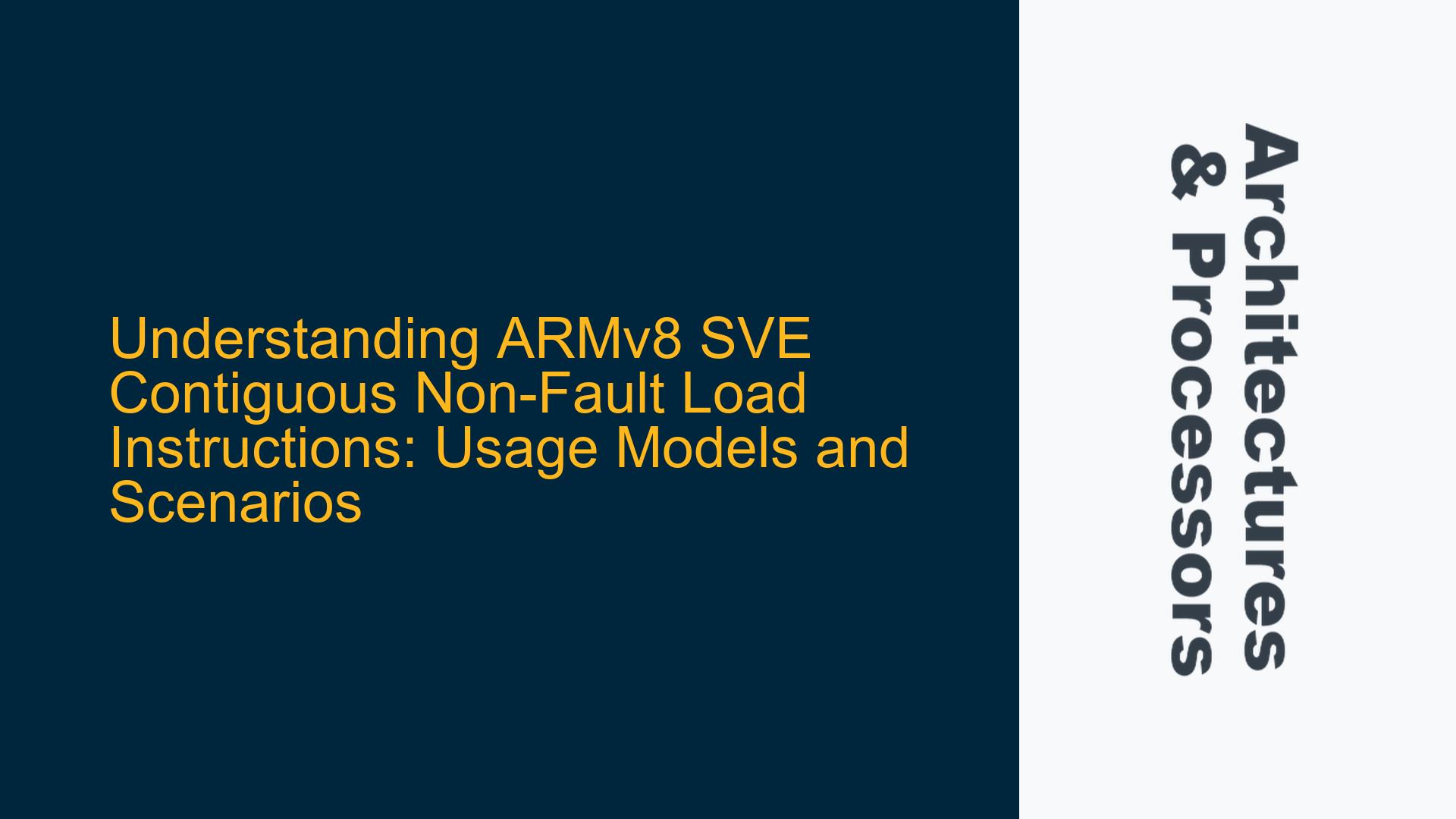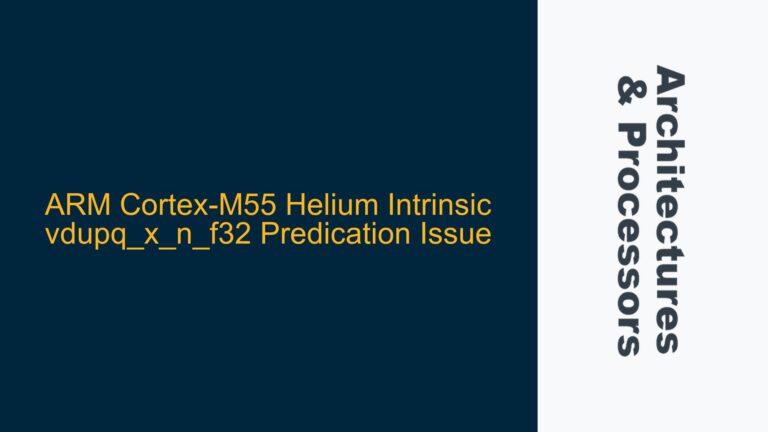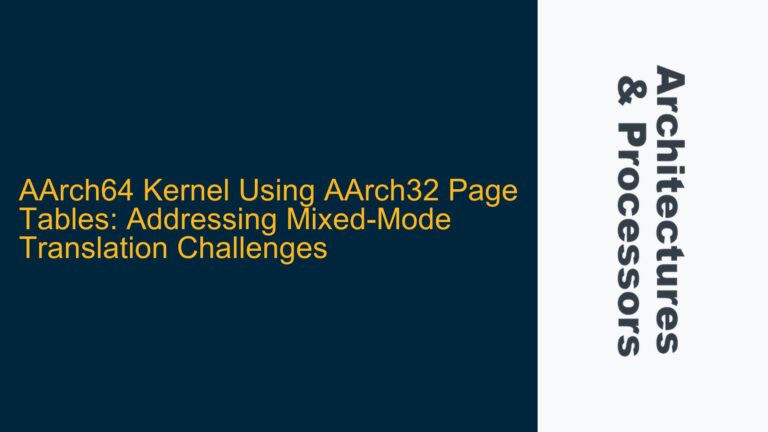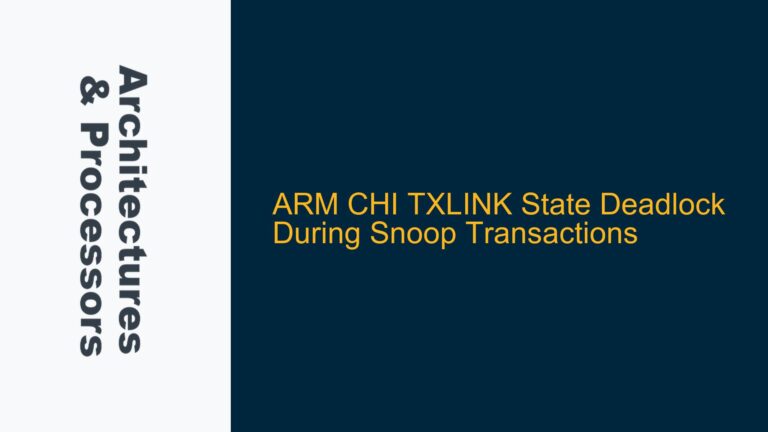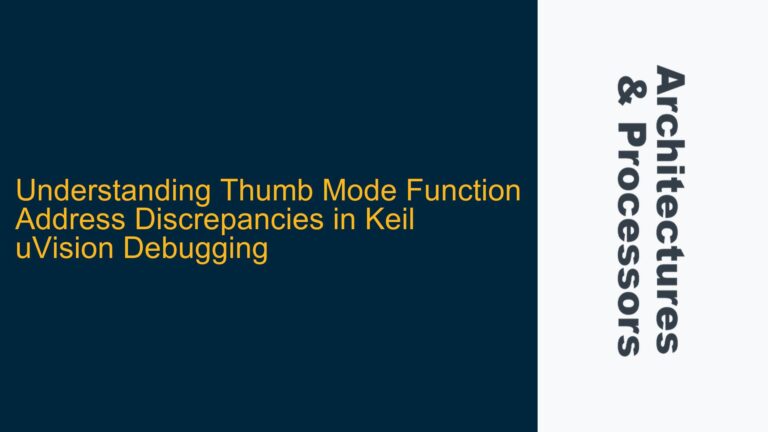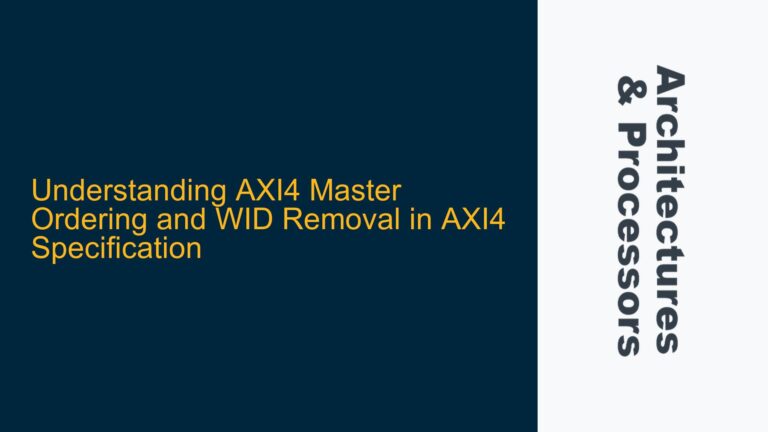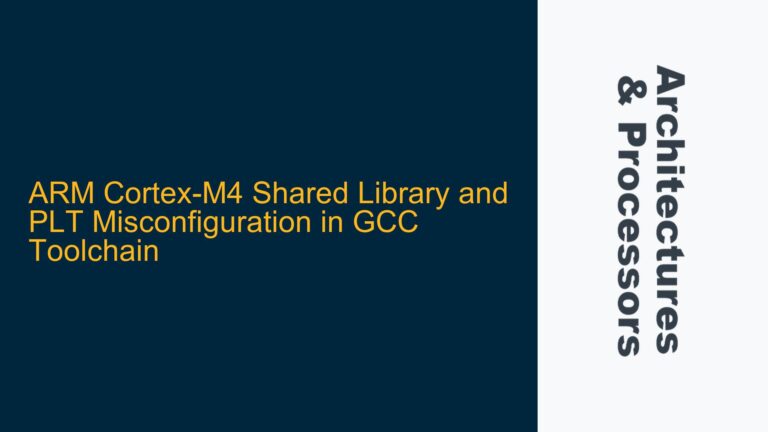ARMv8 SVE Contiguous Non-Fault Load Instructions: Key Concepts and Use Cases
The ARMv8 Scalable Vector Extension (SVE) introduces a powerful set of instructions designed to enhance performance in data-parallel workloads. Among these, the contiguous non-fault load instructions (LDNF) stand out as a specialized tool for handling memory operations in scenarios where fault tolerance and predictable behavior are critical. Unlike the more commonly discussed first-faulting load instructions (LDFF), which are designed to handle dynamic loop exits and speculative memory accesses, the non-faulting load instructions serve a distinct purpose. This post delves into the technical details of LDNF instructions, their usage models, and the specific scenarios where they provide significant advantages.
The Role of Non-Faulting Loads in SVE: Avoiding Memory Access Faults
The primary purpose of the non-faulting load instructions (LDNF) in ARMv8 SVE is to ensure that memory accesses do not generate faults, even if the accessed memory location is invalid or inaccessible. This behavior is particularly useful in scenarios where speculative memory accesses are required, and the program logic must continue execution without interruption due to memory-related exceptions.
In traditional vectorized code, accessing memory locations beyond the bounds of valid data structures can result in segmentation faults or other memory access violations. These faults can disrupt program execution and complicate error handling. The LDNF instructions address this issue by allowing the processor to load data from memory without raising exceptions, even if the memory address is invalid. Instead of faulting, the instruction completes successfully, and the invalid memory access is masked or handled gracefully by the program logic.
The non-faulting behavior of LDNF instructions is achieved through a combination of hardware and software mechanisms. The SVE hardware ensures that memory accesses are performed speculatively, and any faults that would normally occur are suppressed. The software, on the other hand, must be designed to handle the possibility of invalid data being loaded, typically by using predicate registers to filter out invalid elements during subsequent processing.
Scenarios Where Non-Faulting Loads Are Essential: Real-World Applications
The non-faulting load instructions (LDNF) are particularly useful in several key scenarios, including boundary handling in vectorized loops, speculative memory accesses in search algorithms, and efficient handling of sparse data structures. Each of these scenarios leverages the non-faulting behavior of LDNF instructions to improve performance and simplify program logic.
Boundary Handling in Vectorized Loops
One of the most common use cases for LDNF instructions is in vectorized loops where the loop operates on arrays or data structures of variable length. In such cases, the loop may need to access memory locations near the end of the array, where the number of remaining elements is less than the vector length. Without non-faulting loads, accessing these boundary elements could result in memory faults if the memory address is invalid.
For example, consider a vectorized loop that processes an array of integers. If the array length is not a multiple of the vector length, the final iteration of the loop may attempt to access memory locations beyond the end of the array. With LDNF instructions, these out-of-bounds accesses do not generate faults, allowing the loop to complete without interruption. The program can then use predicate registers to mask out the invalid elements and process only the valid ones.
Speculative Memory Accesses in Search Algorithms
Another important use case for LDNF instructions is in search algorithms that perform speculative memory accesses. In many search algorithms, such as binary search or hash table lookups, the algorithm may need to access memory locations that are not guaranteed to be valid. For example, a binary search algorithm may speculate that a particular memory location contains the target value, but this speculation may be incorrect.
With traditional load instructions, accessing an invalid memory location would result in a fault, causing the algorithm to fail. However, with LDNF instructions, the algorithm can safely access the speculated memory location without risking a fault. If the access is invalid, the algorithm can simply discard the result and continue searching. This speculative behavior can significantly improve the performance of search algorithms by reducing the overhead of bounds checking and error handling.
Efficient Handling of Sparse Data Structures
Sparse data structures, such as sparse matrices or graphs, often contain large regions of unused or zero-valued elements. Processing these structures efficiently requires the ability to skip over the unused elements without incurring the overhead of bounds checking or fault handling. LDNF instructions are well-suited for this task, as they allow the program to load elements from memory without generating faults, even if the elements are invalid.
For example, consider a sparse matrix-vector multiplication algorithm. The algorithm needs to multiply each non-zero element of the matrix by the corresponding element of the vector and accumulate the results. With LDNF instructions, the algorithm can load elements from the matrix and vector speculatively, without worrying about whether the elements are valid. The program can then use predicate registers to filter out the zero-valued elements and perform the multiplication only on the non-zero elements. This approach eliminates the need for explicit bounds checking and allows the algorithm to process the sparse data structure efficiently.
Implementing Non-Faulting Loads in ARMv8 SVE: Best Practices and Optimization Techniques
To fully leverage the benefits of non-faulting load instructions (LDNF) in ARMv8 SVE, developers must follow best practices for implementing and optimizing these instructions. This section provides detailed guidance on how to use LDNF instructions effectively, including predicate register management, memory access patterns, and performance optimization techniques.
Predicate Register Management
Predicate registers play a crucial role in the effective use of LDNF instructions. These registers are used to mask out invalid elements and control which elements are processed by subsequent instructions. Proper management of predicate registers is essential to ensure that the program behaves correctly and efficiently.
When using LDNF instructions, developers should initialize the predicate registers to reflect the valid elements in the data structure. For example, in a vectorized loop that processes an array, the predicate register should be set to mask out elements beyond the end of the array. This ensures that only valid elements are processed, while invalid elements are ignored.
In addition to initializing predicate registers, developers should also consider the impact of predicate register usage on performance. Excessive use of predicate registers can lead to increased instruction overhead and reduced performance. To minimize this overhead, developers should strive to use predicate registers efficiently, avoiding unnecessary updates and ensuring that predicate values are reused wherever possible.
Memory Access Patterns
The performance of LDNF instructions is heavily influenced by the memory access patterns used in the program. To maximize performance, developers should aim to optimize memory access patterns to minimize cache misses and maximize data locality.
One effective technique for optimizing memory access patterns is to use stride-based access patterns, where memory accesses are performed at regular intervals. This approach can improve cache utilization by ensuring that data is loaded into the cache in a predictable manner. For example, in a vectorized loop that processes a 2D array, the program can use stride-based access patterns to load elements from consecutive rows or columns, improving cache locality and reducing the likelihood of cache misses.
Another important consideration is the alignment of memory accesses. Aligned memory accesses are generally faster than unaligned accesses, as they allow the processor to load data more efficiently. Developers should ensure that memory accesses are aligned to the natural boundaries of the data type being accessed, such as 64-bit boundaries for double-precision floating-point numbers.
Performance Optimization Techniques
In addition to predicate register management and memory access patterns, developers can employ several other techniques to optimize the performance of LDNF instructions. These techniques include loop unrolling, software pipelining, and vectorization.
Loop unrolling is a technique where the body of a loop is replicated multiple times, reducing the overhead of loop control instructions and improving instruction-level parallelism. By unrolling loops that use LDNF instructions, developers can increase the throughput of memory accesses and reduce the impact of instruction latency.
Software pipelining is another technique that can improve the performance of LDNF instructions. This technique involves overlapping the execution of multiple iterations of a loop, allowing the processor to execute instructions from different iterations in parallel. Software pipelining can be particularly effective in vectorized loops, where the processor can load data from one iteration while processing data from another.
Vectorization is the process of converting scalar operations into vector operations, allowing the processor to perform multiple operations in parallel. By vectorizing code that uses LDNF instructions, developers can take full advantage of the parallel processing capabilities of ARMv8 SVE, significantly improving performance.
Conclusion: Leveraging Non-Faulting Loads for Robust and Efficient Code
The non-faulting load instructions (LDNF) in ARMv8 SVE provide a powerful tool for handling memory accesses in scenarios where fault tolerance and predictable behavior are critical. By understanding the usage models and best practices for implementing these instructions, developers can create robust and efficient code that takes full advantage of the capabilities of ARMv8 SVE. Whether handling boundary conditions in vectorized loops, performing speculative memory accesses in search algorithms, or processing sparse data structures, LDNF instructions offer a versatile and effective solution for a wide range of applications.
